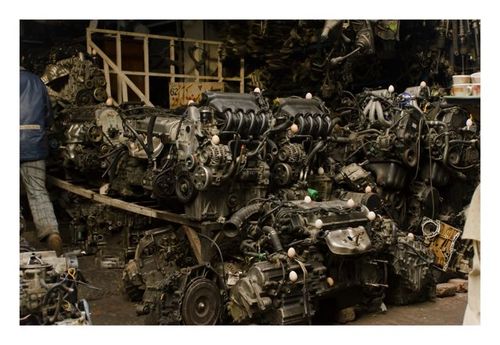of eggs and engines……
Editioned archival C-prints, 2010
In Lahore some three hundred new cars join the roads every day.
A city where a mere eight percent of the populace have private transport amongst its ten
million inhabitants. Where the car is king and the environment is continually
carved up and polluted in deference to the needs of the private motorist. Where
crossing a road on foot, no matter where or when, is a life threatening event.
More than anywhere, it is here that the private vehicle is the ultimate object of
desire. Its acquisition usually involves long term debt for our cars are extremely
expensive. Yet the majority of the drivers are unschooled, unlicensed, madly
aggressive and totally fatalistic. The result of this is a massive sprawling market
of cannibalized cars at Bilal Gunj. Here the almost pristine parts of the recently
deceased mingle with those of the newly stolen and freshly dismembered. These
car parts are displayed in so many carefully ordered bowers with the proud
mechanics of death in close attendance. An exclusively male, necrophilic and
auto-erotic atmosphere prevails in the market. It is from this vale of everlasting
youth that the ageing and accident prone legions of Lahore’s cars are endlessly
reanimated by so many mechanical Dr Frankensteins.
David Chalmers Alesworth is an artist, art educator and avid gardener (in its
broadest interpretation). He has been living and working in Pakistan for the past
twenty ‐two years and has a long history of collaboration and a deep
involvement with the urban‐crafts and bazaars of Pakistan. He was a pivotal
member of the decorated transport movement of Karachi in the nineteen
ninety’s and subsequently moved to Lahore in 2006.
Over the years, Alesworth has examined the conventions and visual codes of Pakistani society and of urban
life in particular. His work often addresses the aesthetic of Pakistan’s urban
street culture and through this speaks of his twined issues of nuclearisation and
environmental degradation. These concerns resonate through a long career that
continues to stylistically reinvent itself.


